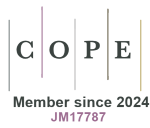The impact of antimicrobial stewardship programs on the appropriateness of prophylaxis and antimicrobial therapy: the experience of the “F. Miulli” Hospital of Bari
DOI:
https://doi.org/10.33393/ao.2021.2199Keywords:
Antimicrobial stewardship, Antimicrobial stewardship programs, Multidisciplinary group, Surgical wardsAbstract
Introduction: The continuous increase of antimicrobial resistance (AMR) requires antimicrobial stewardship programs (ASPs) to optimize antimicrobial use, including selection, dose, duration, and way of administration.
Methods and Results: An “Antimicrobial Stewardship Team” (AST) was established at “F. Miulli” Hospital of Bari. The AST is a multidisciplinary group formed by a pharmacist, an infectious disease specialist, a microbiologist, an anesthetist and a hygienist. The AST has started a clinical path of professional interactions and optimization of antimicrobial use. The AST was focused on surgical antibiotic prophylaxis, planning events/meetings with 13 wards of “F. Miulli” hospital and writing 13 operating guidelines. The AST was focused on antimicrobial therapies too. On this occasion, the AST did not organize events or meetings but was focused on professional interactions with clinicians to optimize the antimicrobial use in the treatment of multi-drug resistant (MDR) pathogens. A reduction of antimicrobial use (defined daily dose, DDD) and pharmaceutical expenditure was reached in surgical wards during 2017-2018, while, in the same period, an increase of antimicrobial use (DDD) and pharmaceutical expenditure was observed in non-surgical wards.
Conclusions: The “Antimicrobial Stewardship Team” programs are essential to monitor the hospital economic resources and to support the purchase of the innovative antimicrobial therapies to treat multi-drug resistant pathogens.
References
- Tamma PD, Cosgrove SE. Antimicrobial stewardship. Infect Dis Clin North Am. 2011;25(1):245-260. https://doi.org/10.1016/j.idc.2010.11.011 PMID:21316003
- Gattuso G, Tomasoni D, Costa P, et al. Un progetto aziendale di “antimicrobial stewardship” per la gestione della terapia antibiotica in ospedale. Le infezioni in medicina: rivista periodica di eziologia, epidemiologia, diagnostica, clinica e terapia delle patologie infettive. Genn. 2013;21(s1):38.
- Talpaert MJ, Gopal Rao G, Cooper BS, Wade P. Impact of guidelines and enhanced antibiotic stewardship on reducing broad-spectrum antibiotic usage and its effect on incidence of Clostridium difficile infection. J Antimicrob Chemother. 2011;66(9):2168-2174. https://doi.org/10.1093/jac/dkr253 PMID:21676904
- Perez KK, Olsen RJ, Musick WL, et al. Integrating rapid pathogen identification and antimicrobial stewardship significantly decreases hospital costs. Arch Pathol Lab Med. 2013;137(9):1247-1254. https://doi.org/10.5858/arpa.2012-0651-OA PMID:23216247
- Cusini A, Rampini SK, Bansal V, et al. Different patterns of inappropriate antimicrobial use in surgical and medical units at a tertiary care hospital in Switzerland: a prevalence survey. PLoS One. 2010;5(11):e14011. https://doi.org/10.1371/journal.pone.0014011 PMID:21103362
- Antonioli P, Formaglio A, Gamberoni D, Bertoni L, Perrone P, Stefanati A, Libanore M, Cultrera R, Gabutti G. Hospital discharge in patients at risk of surgical site infection: antimicrobial stewardship at Ferrara University Hospital, Italy. J Prev Med Hyg. 2018;59(2):E139-E144. eCollection 2018 Jun. https://doi.org/10.15167/2421-4248/jpmh2018.59.2.982 PMID: 30083621
- Giacobbe DR, Del Bono V, Mikulska M, Gustinetti G, Marchese A, Mina F, Signori A, Orsi A, Rudello F, Alicino C, Bonalumi B, Morando A, Icardi G, Beltramini S, Viscoli C; San Martino Antimicrobial Stewardship Group. Correction to: Impact of a mixed educational and semi-restrictive antimicrobial stewardship project in a large teaching hospital in Northern Italy. Infection. 2017 Dec;45(6):929. https://doi.org/10.1007/s15010-017-1068-2. PMID: 28983883
- Bolla C, Di Pietrantonj C, Ferrando E, et al. Example of antimicrobial stewardship program in a community hospital in Italy. Med Mal Infect. 2020;50(4):342-345. https://doi.org/10.1016/j.medmal.2019.11.008 PMID:31848106









